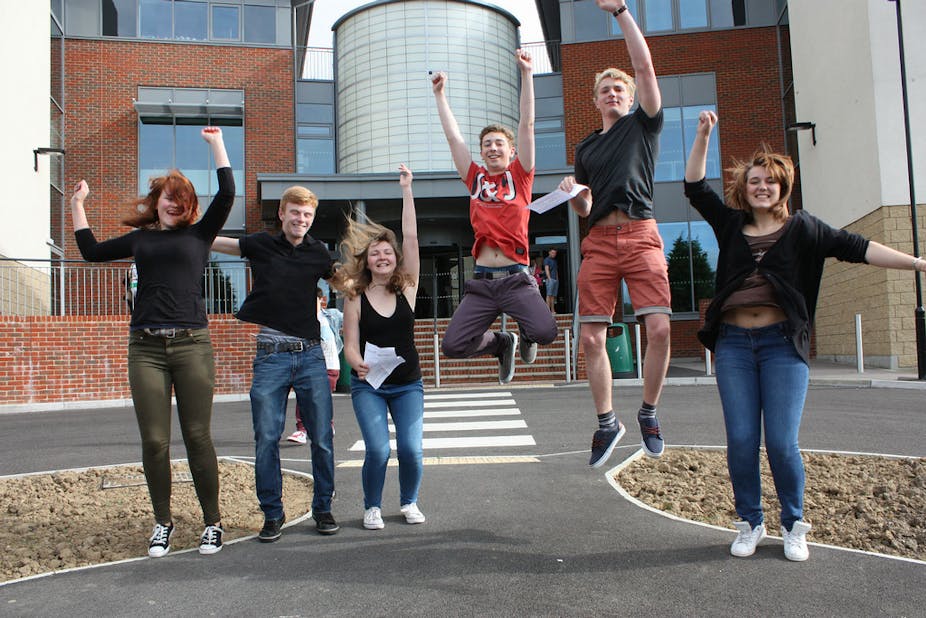Only 3% of able students from poorer backgrounds are likely to end up at an elite university, according to new research on the impact of education on social mobility. This is compared to 10% of students overall. But poorer students are actually getting into elite universities with lower A-level grades than their richer counterparts.
Education, particularly at university-level, is a major route to success in the labour market and is one of the main drivers of social mobility. It is essential we understand how to improve the chances of poor but able students attending higher education and specifically achieving access to the most high status universities.
In research funded by the Social Mobility and Child Poverty Commission, Claire Crawford at the University of Warwick, Lindsey Macmillan from the Institute of Education and I investigated the pathways that able children from different socio-economic backgrounds take on their route to higher education.
We focused on those poor children who, against the odds, succeeded in making their way into a high status university, building on research which has documented the stark socio-economic gaps in pupils’ achievement at every stage. Previous research has also looked at these issues on widening participation before, but not with the same data.
We defined high-status institutions as those in the Russell Group or with similarly strong research profiles, as measured by the Research Assessment Exercise. We used administrative data on a cohort of children born in 1991–92 and we were able to follow them through the education system into higher education.
Falling behind on qualifications
The socio-economic gaps in achievement are stark. Overall, around one in ten students attends a high status university, using our definition. By contrast just less than 3% of poor students who claimed free school meals throughout secondary school go to an elite university.
But this very large discrepancy is almost entirely explained by the fact that poorer students do not do as well as their richer counterparts throughout the education system and fail to attain the necessary qualifications at A level to access such institutions.
Earlier in the education system, only just under 9% of the most deprived children reach level 3 in both reading and maths at Key Stage 1. This is compared with 27% of the least deprived children. At Key Stage 2, 7% of those who always claim free school meals attain level 5 in English and maths, compared with 19% of those who do not always claim free school meals.
Our research also suggests that while high achieving children from well-off families continue on their high attainment trajectory throughout their education, equally able children from poorer families fall off this trajectory particularly between ages 11 and 16.
This results in fewer deprived children getting good grades at GCSE and continuing on to post-16 and higher education. We concluded that this means secondary schools have a vital role to play in protecting and enhancing the performance of all children who are high attainers at primary, particularly those from the most deprived backgrounds.
Getting in with lower grades
Poor students who do succeed in making it into a high status university actually have lower A level grades than their more advantaged peers who also attend such institutions.
Of those who enrol in an elite university, 47% of the most deprived children achieve at least three A or B grades at A level, compared with 73% of the least deprived children. This finding is only partially explained by the fact that poorer students tend to attend the less elite universities (that have lower grade requirements) within this group of higher status institutions.
There are two main explanations as to why poorer students in elite institutions have slightly lower A level grades. It may be that richer students exceed the university minimum A level grade requirement by more than poorer students, effectively over-shooting on what universities ask of them.
Alternatively, it may mean that some universities are taking account of students’ contexts when making grade offers: they may acknowledge that some students have more disadvantaged circumstances and so offer them lower grades.
Further research is needed to understand which of these explanations is more likely, but either way this implies that children from more deprived backgrounds can afford to be more ambitious and increase their rate of application to elite institutions.
It is therefore important that schools, universities and policymakers do everything they can to provide the support and advice poor students need to make applications to higher status universities: those with the top grades stand a good chance of getting in if they do apply.

